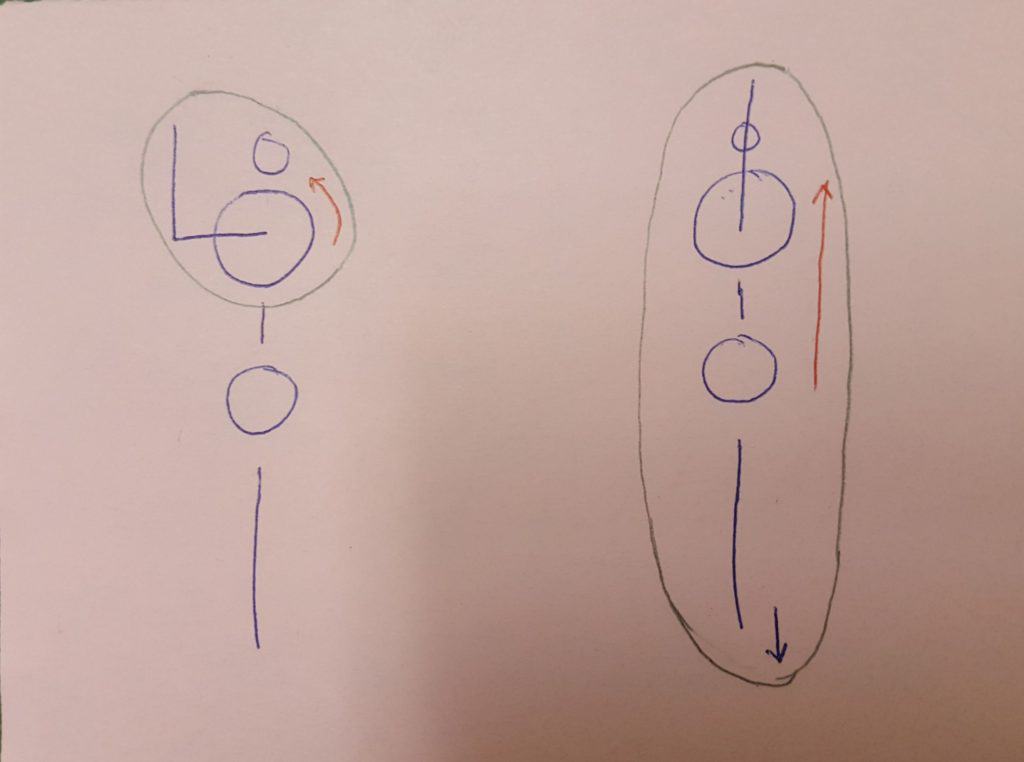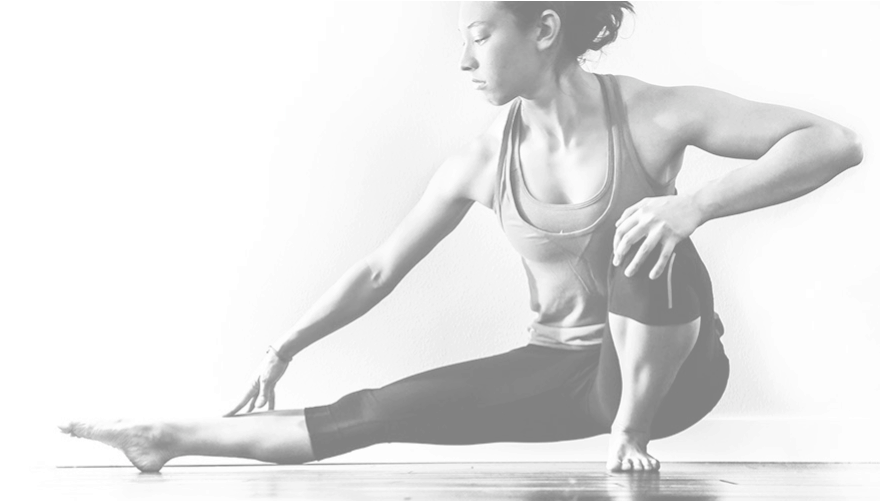
Rotational Organization
The following is a glimpse into the mind of Nicole Uno (IG @unotraining).
Rotational Organization allows for the simultaneous existence between contract and relax. Thoroughly simplified, consider two gears. There is an impetus of force and a corresponding area of relaxation that transmits an easy, fluid movement. If both attempt to be the driver, it would create slack in the chain:
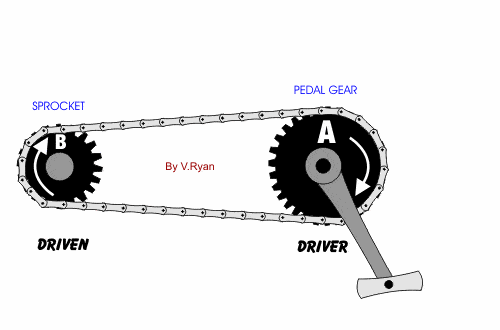
The goal of rotational organization is create and keep length.
Anchoring the feet to ground and not letting them slide lets maintains the space to transfer movement and re-position parts in between.
Anchoring refers to the hands and/or feet locking into a surface. Stable pieces will be driven downward, creating an axis which the rest of the body (or respective parts) can swivel around:
First the feet and then the single arm drive downward to express rotational motion. Armpit anchors push throughout, either into the ground or to lead the opposing elbow.
Vertical alignment of the system effects pulls as well as pushes. Vertical forearms transformed chin ups from an impossible task to an easy and accessible one. I had assumed supinated grip pulls were easier because of bicep strength, but the reality was that when my palms faced behind me my elbows pointed straight down. Hands reversed, they tended to jut out at the sides at about 30-degrees. The wrong angles created slack in the system and made my parts work independent of one another. Forearms aligned with the direction of the pull, it acted more like a literal pulley, with the joints of the shoulder organizing around the fixed point of the wrist instead of getting caught in the elbow.
Similarly, when climbing, one can hang vertically and ‘rest’ when their lines of tension and gravity are aligned. (Just as one can ‘stand’ with very little effort if their joints are stacked over their center). Tension in the elbows leads to unnecessary strain. It adds another cog to the pulley that establishes excessive tightness through particular parts of the chain. Preserving space between the hands and armpits leaves the elbows free to thread in any direction necessary, and most easily transition between push and pull.
Here Nicole examines an equivalent relationship between hips and feet, prioritizing sequence and pressing downward:
A timing element permeates everything. The contract-relax and push-pull relationship must be sychronized to simultaneously exist. Too much of either upsets the balance and trends the system to behave more toward an extreme. Again, the tension between parts and lines must precisely fit the movement and adjust accordingly as the needs of the movement change:
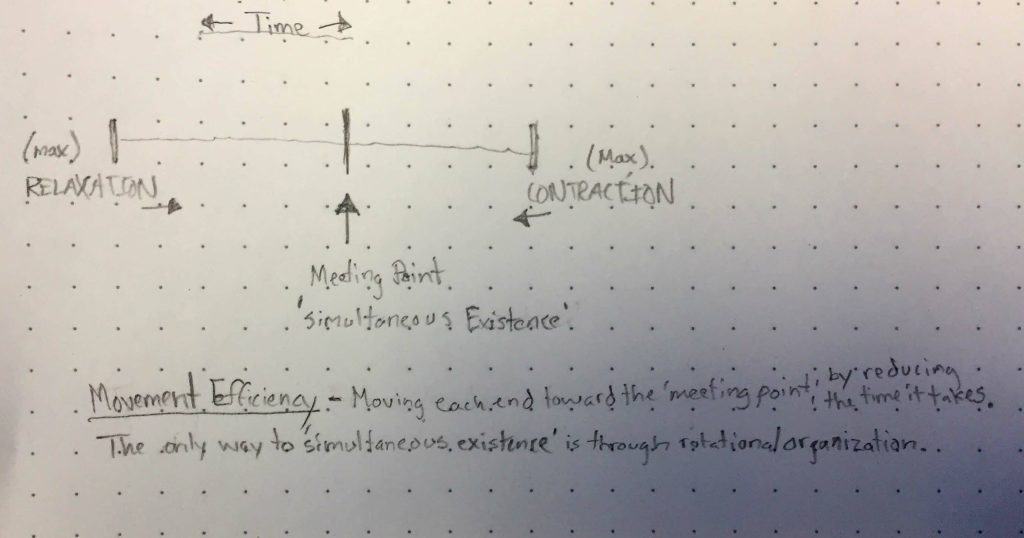
Finally, rotation functions as a stabilizer. It readies for movement and also moves. Arches, forearm/ shin torque, knee/elbow pivots, and ball and socket joints all account for steadfast anchoring and organizational rotation to absorb load and transmit force:
Edit: Two months later, as this concept swirled around in my mind, I got my chin over the bar with shocking ease and a full picture visual came into mind. Consider the stiff bar that connected two old-timey railroad wheels:
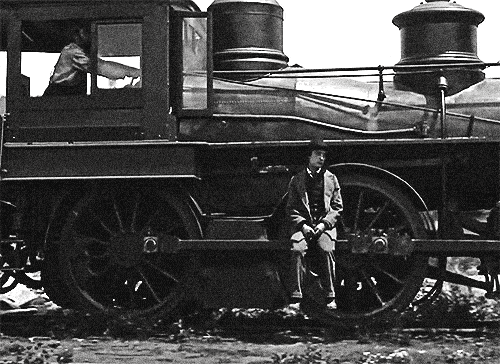
I always stopped short from getting my chin over bar (usually stalling at eyes or a reaching nose) because I only looped around the rib cage. This forced my head and thorax to rotate forward and collapse, leaving my lower body unattached and posteriorly tilting to compensate. (I looked like a parenthesis.) If I were to get and maintain length from the start, the lats and glenohumeral joint letting the body fully sink, I loop the entire body (more wheels) on the pull and the downward force on the elbows shoots the stiff lever up. Getting height becomes easy because there is no rotation off the vertical line.
